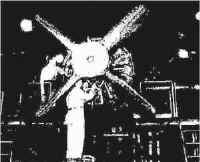
 |
 |
|
|
City of Industry Paterson became a
city of many firsts in industry, such as the first manufacturing of
continuous sheet paper and the invention of the first practical
submarine by John P. Holland.
In 1836, the Colt Gun Mill, a magnificent four-story brownstone
building, was built on an area directly below the waterfalls. Here,
Samuel Colt first manufactured his revolvers, with mother of pearl
handles, which were essential in securing the American frontier. At the close of the War of 1812, Paterson had one card and wire factory, one sawmill, one rolling mill, and eleven cotton mills. The tariff of 1816 brought new hopes and the town continued to grow as an industrial center. When one industry failed, others replaced it. In 1825 Paterson became known as the "Cotton Town of the United States" and many new mills were built. One of these was Passaic Mill No. 1, known as Colt's "Duck Mill." It was here that John Colt manufactured cotton and flax products and later improved cotton duck sailcloth. He substituted power for handlooms and by 1827, Paterson had what was probably the largest duck factory in the country. Naval contracts were given to the Paterson canvas industry to insure a domestic supply in case of war. The Colt mill made the sails for the yacht, "America," which won the celebrated race in England in 1851. The emerging city became the scene of momentous events in engineering, architecture and urban design, as well as a vivid stage of immigration and labor history. Paterson was the location of the "Silk Strike of 1913" and the beginning of the industrial labor union movement. The City of Paterson achieved a character and prominence in the national economy undreamed of by its founders. It became known as "The Silk Center of America" when the manufacturing of silk products employed thousands of workers in their mills. It also became known as "The Strawberry City of the World." 
When iron replaced wood as the basic material for building machinery, the Paterson shops, (which had been making bobbins, spindles, looms and other light equipment), were easily converted to the manufacturing of tools, locomotives, and general machinery. It was natural in a community such as Paterson, where a high percentage of the female population was employed in the mills, that men should find work in the machine shops that were maintained to keep the mills running. The men of Paterson were among the first in the country to qualify as machinists and were ready when the opportunity came to do metal work. Paterson became a
prosperous locomotive center in 1860. Three locomotive manufacturing
companies, the Rogers Locomotive Works, Danforth & Cooke
Company, and Grant Locomotive
Company were located here. Altogether, these companies produced over
10,000 steam locomotive engines. The Rogers Locomotive Works was the
second largest manufacturer in the country. The No. 119 locomotive
met the locomotive from the west on the Trans-Continental Railroad
in the state of Utah in 1869 when the famous "Golden
Spike" was driven. The No. 299 locomotive, which was one of During World War II, Paterson became a major center of Curtiss-Wright engine production. In 1920, the Wright Aeronautical Corporation designed and built the Whirlwind and Cyclone aircraft engines, which made aviation history. In 1927 Charles Lindberg had a 200 Horsepower J-1 air-cooled Whirlwind Engine custom-made for his historic solo Trans-Atlantic flight. Through the 1930's and 40's, the company employed as many as 25,000 workers and manufactured over 120,000 various types of aircraft. It was during this period of time that Paterson was called "The Aviation City." Long before anyone took the notion of flight seriously, Alexander Hamilton and his associates set the stage for Paterson's industrial achievment when they founded the Society for Establishing Useful Manufactures (S.U.M.). This event of 1791 would have to be considered the starting point of Paterson's industrial heritage. |



 many used in the construction of the Panama Canal, is currently
standing outside the Paterson Museum.
many used in the construction of the Panama Canal, is currently
standing outside the Paterson Museum.